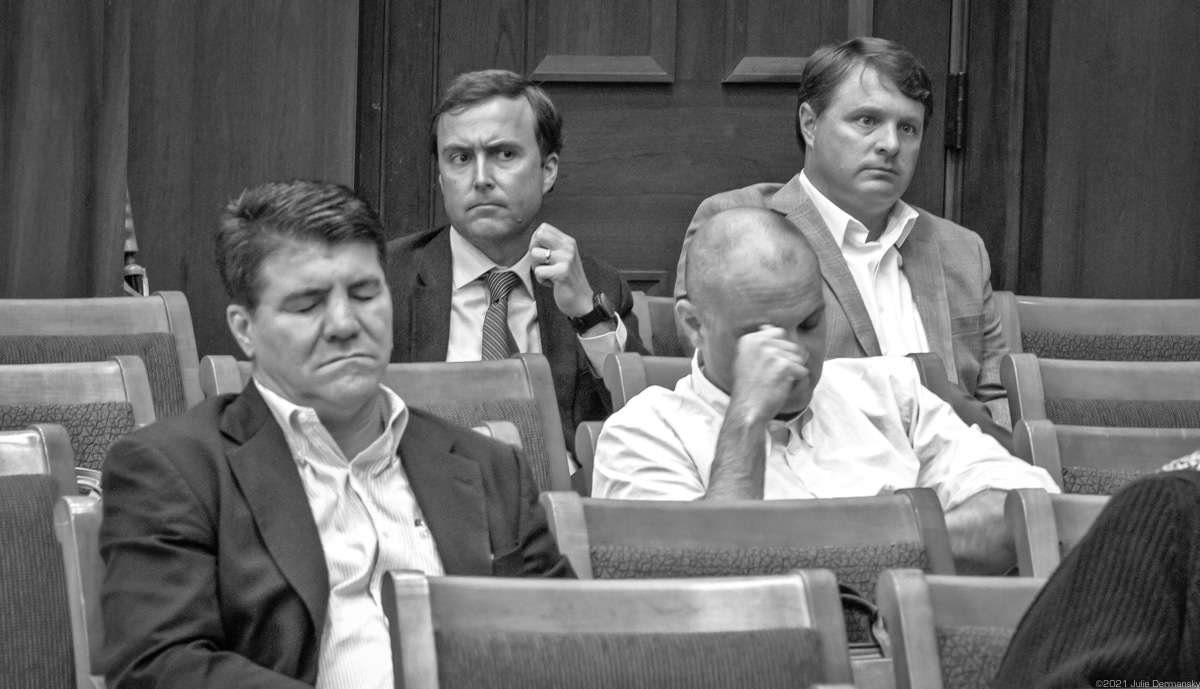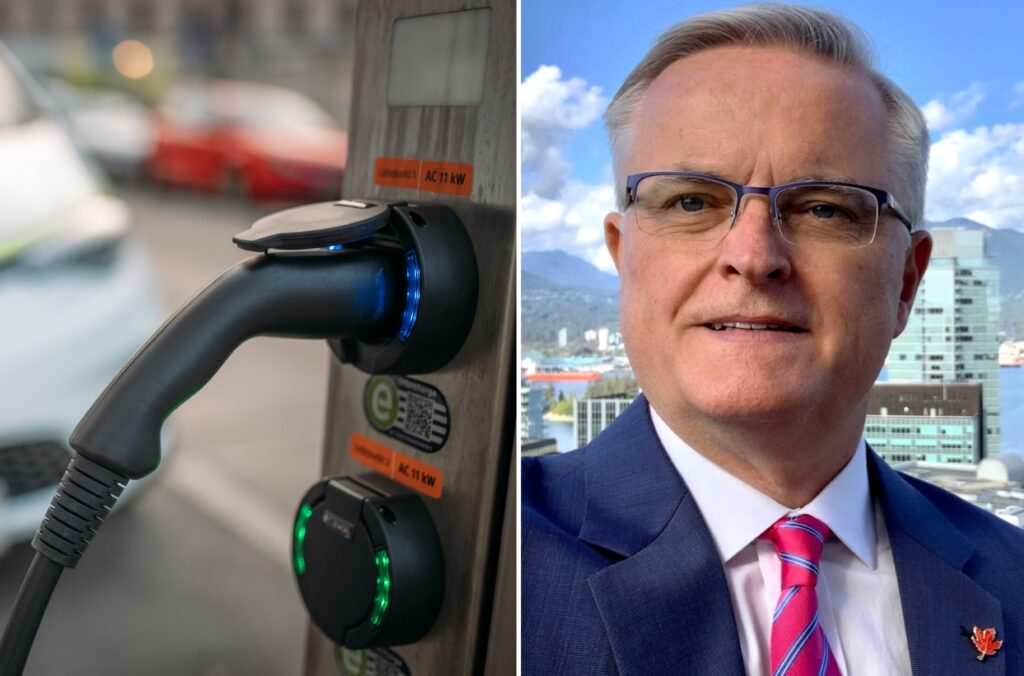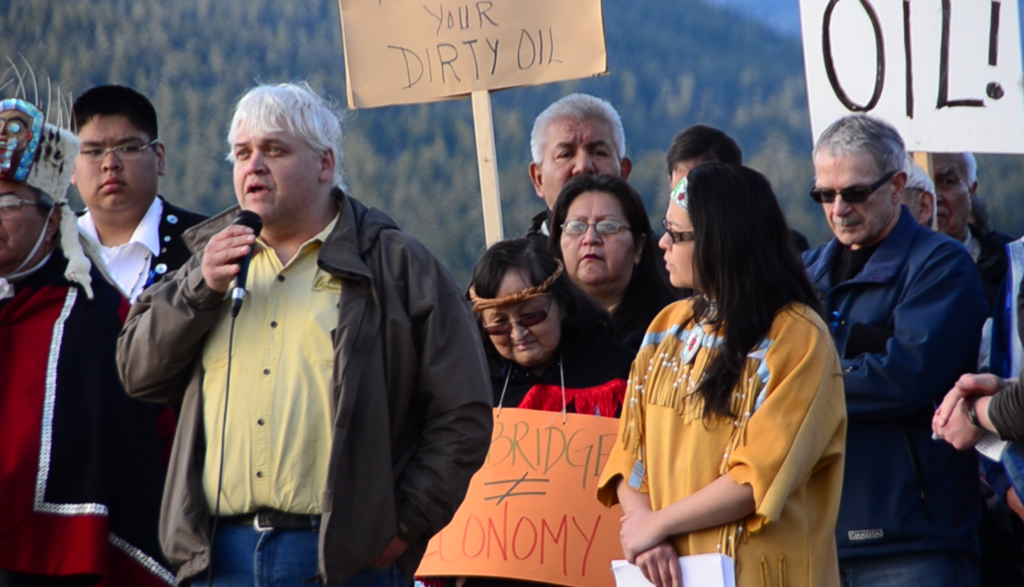“Our state is addicted to fossil fuels and, like many addicts, instead of seeking to break our addiction. We seek ways to become functional addicts,” said Jesse George, with the consumer nonprofit group, the Alliance for Affordable Energy, at a July 6 public hearing held by the Louisiana Department of Natural Resources (LDNR) in Baton Rouge.
George was speaking against the regulatory agency’s request to the Environmental Protection Agency (EPA) to lead on issuing permits for carbon capture and storage projects in Louisiana, and against such projects in general: “The pipe dream of carbon capture and sequestration is a prime example of this. False promises about carbon capture and sequestration abound, propagated purposely by those with a vested interest in perpetuating our addiction.”
“Carbon capture and sequestration does not remove any carbon from the atmosphere,” he went on to say. “Rather in the most optimistic scenario, it would prevent a minute fraction of the carbon emitted by industrial processes from being released. It has never been proven to work at scale or to securely store carbon over the long term.”
George’s testimony foreshadowed the tone of the other six speakers that followed him who also spoke adamantly against the LDNR’s office of Conservation Injection and Mining division’s application to the EPA for regulatory primacy over Class VI injection wells, used for carbon capture and storage.
The EPA is the primary enforcement authority for the country’s underground injection control program and the agency is required to consider the impacts of these projects, including protecting underground sources of drinking water that such wells could pollute.
So far, the EPA has only granted two states, Wyoming and North Dakota, control over permitting Class VI injection wells; Louisiana hopes to be the third.
Overall, the EPA has to-date only permitted two Class VI wells, and has another three permit requests pending.
Carbon capture and storage (CCS) is the process of capturing and storing carbon dioxide (CO2) — a destructive greenhouse gas — released from the burning of fossil fuels at power plants and other large industrial facilities before it is emitted into the atmosphere. Major fossil fuel companies, like Exxon, tout CCS as a necessary tool for the United States to reduce CO2 emissions as outlined in the Paris Agreement.
The federal government has already created tax credits for developing carbon sequestration technology and started issuing permits for Class VI injection wells. These wells will allow carbon pollution to be injected deep under the ground into rock formations where it will presumably be stored forever. The state’s application argues that allowing the state primacy over permits would streamline the permitting process.
Prior to the hearing in Louisiana, environmental advocacy groups, including Center for International Environmental Law (CIEL), Gulf Coast Center for Law & Policy, Red, Black & Green New Deal Initiative at the Movement for Black Lives, and The Alliance for Affordable Energy, held a webinar about CCS.
The groups stressed the safety impacts, including possible toxic spills and explosions at the injection well sites and from the network of pipelines used to supply the CO2 pollution interfering with the state’s coastal restoration projects. They also pointed to health risks for minority communities in Louisiana from toxic emissions that such projects will produce that the EPA has found increase the risk of cancer.
The groups presented a fact sheet entitled ”Carbon Capture and Storage: An Expensive and Dangerous Proposition for Louisiana Communities” that states: “Because carbon capture infrastructure would be built near emitting sites, facilities would further harm the same people already overburdened by industrial pollution. In Louisiana, that would put Black, Brown, and Indigenous communities at even greater risk.”
Their fact sheet echoes a 2019 report by Mark Z. Jacobson, a professor of civil and environmental engineering with Stanford University, published in the journal Energy and Environmental Science, suggesting that carbon capture technologies can cause more harm than good. “There is a lot of reliance on carbon capture in theoretical modeling, and by focusing on that as even a possibility, that diverts resources away from real solutions,” said Jacobson. “It gives people hope that you can keep fossil fuel power plants alive. It delays action.”
Similar warnings were echoed by all seven of those who testified against the LDNR’S application at the July 6 hearing held in the LaBelle Hearing Room of the LaSalle Office Building of the agency’s headquarters.
Last year, Gulf Coast Sequestration (“GCS”), a limited liability company in Lake Charles, Louisiana, initiated the process to obtain an EPA permit for what it described in a press release as the largest geologic carbon sequestration asset in the country, and one of the largest in the world; the project would serve as a GCS “hub” in the region. The company claims the site “would have the capacity to sequester 2,700,000 tons of CO₂ annually, it will be equivalent to removing about 600,000 passenger vehicles from the road every year or the equivalent annual carbon avoided from 2,000 wind turbines.”
CCS hubs are likely be sites in communities already being impacted by the climate crisis like Lake Charles and those along the Mississippi River corridor, where most of the state carbon pollution is emitted from fossil fuel power plants. Exxon, for example, is backing a carbon storage project in Houston’s shipping channel, another environmental justice community.
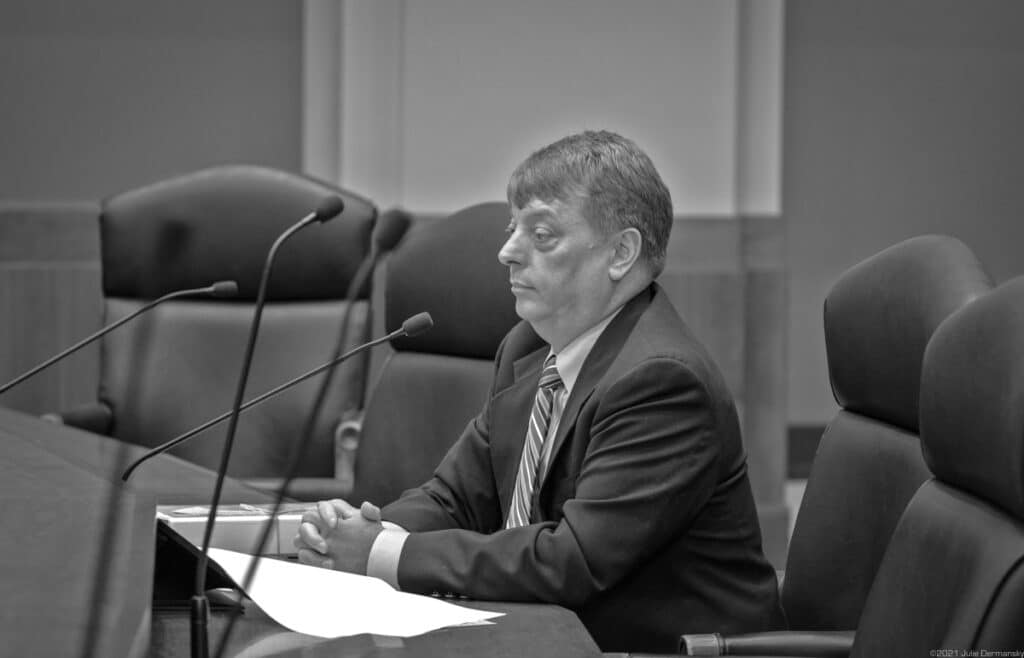
During George’s July 6 testimony he pointed out that many residents in Lake Charles who are still recovering from last year’s hurricanes will likely be impacted by such projects since in his view, allowing these projects will contribute to the climate crisis while also taking resources away from a transition to renewable energy. “The communities that bear the most risk when these projects are cited and constructed,” he said, “are low income communities and communities of color.”
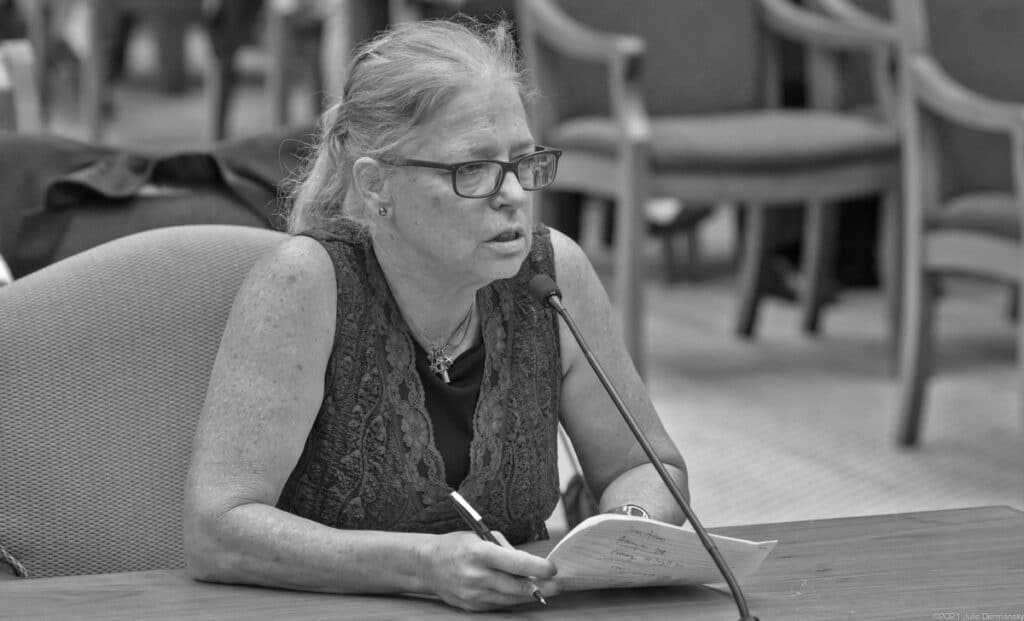
“President Biden and the White House environmental justice advisory council recommend that environmental justice be considered in all programs going forward,” Marion Freistadt a concerned citizen from Louisiana stressed during her testimony, noting this is something she worries the state won’t consider when permitting CCS projects. “The wells that could be drilled are primarily located in sacrifice zones of black, brown, and indigenous communities, which already suffer disproportionately high risks of cancer, high rates of asthma and high death rates from COVID,” she said. She also raised concern that such sites could disturb unmarked burial sites of formerly enslaved persons — many of which only recently came to light.
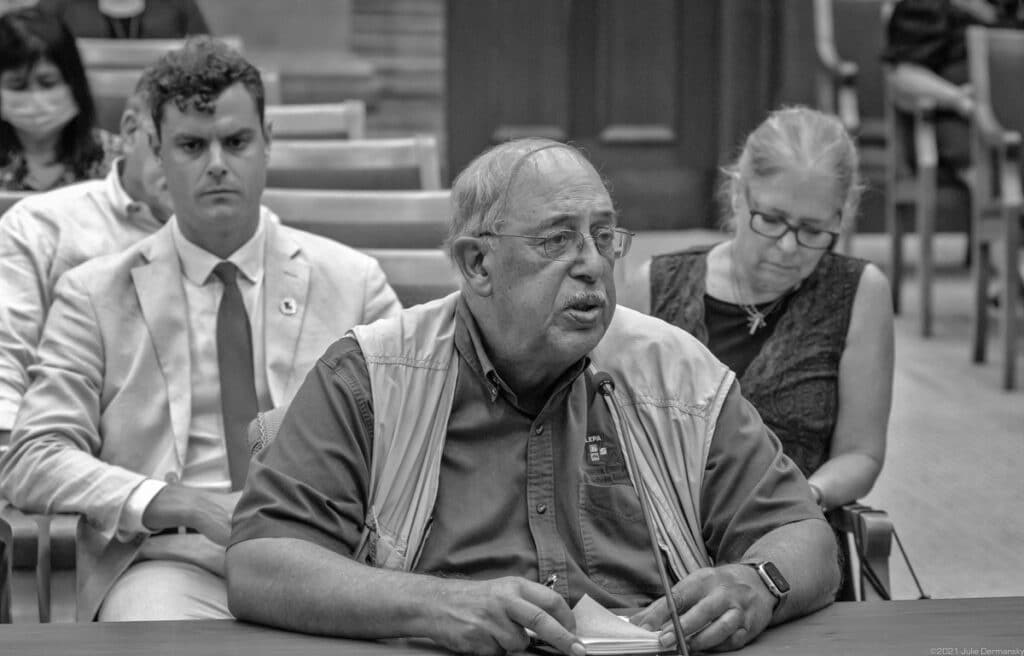
Water quality concerns were also raised during the hearing. Retired Lt. General Russel Honoré, testifying against the state’s application on behalf of the Green Army, an alliance of civic, community, and environmental groups and concerned citizens from around the state, expressed concern for the state aquifers.
One of the risks associated with CCS projects is that when carbon dioxide is stored underground, it has the potential to leak and contaminate groundwater. General Honoré pointed out that if that state starts permitting such projects, it will lead to other states transporting CO2 pollution to Louisiana, putting the state’s water and human health at risk. He reminded the DNR that Louisiana already has a 6,000 square mile dead zone off the coast caused in large part from pollution from other states’ delivered via the Mississippi River.
“We don’t need something else that might infringe on the quality of life in Louisiana,” he said.
Jonathan Sebastian Leo, an environmental lawyer who began his career as an environmental crimes prosecutor with Los Angeles, spoke about his concerns regarding the enforcement program outlined in the application for primacy regarding the environmental justice element which he says falls short. He stressed that such shortfalls in the state’s application appear in its consideration of these vulnerable communities, which must be addressed before the EPA grants the state’s request.
I expected to hear from members from industry that likely support the state’s application but no one testified in person. Besides the seven opponents that spoke, about a dozen other people were spread out in the auditorium, many who appeared to be representatives of the oil and gas industry who took notes throughout the hearing.
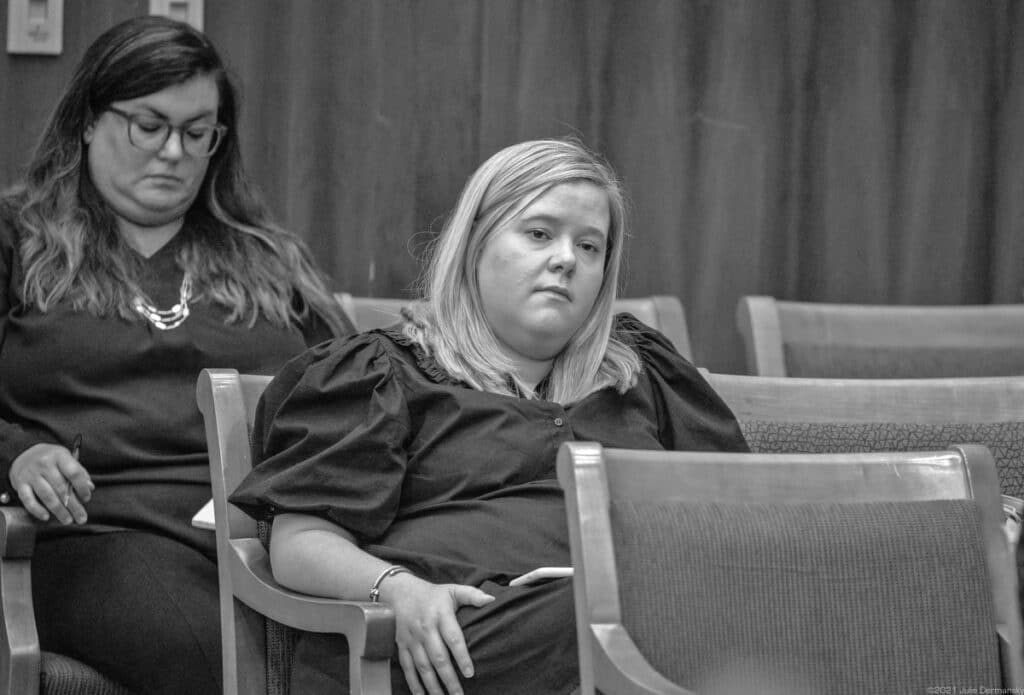
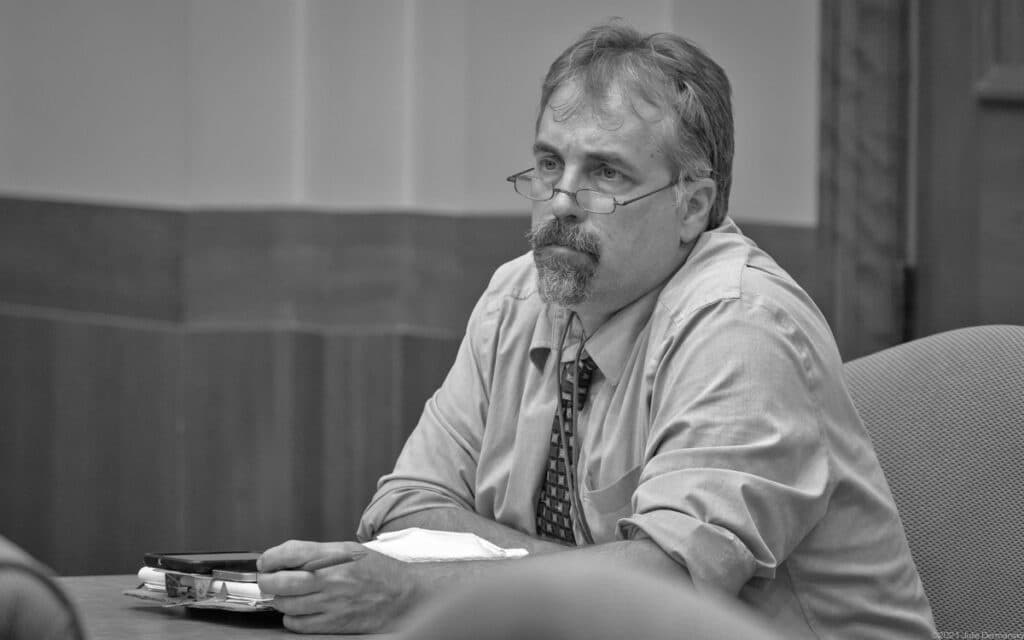
After the hearing, spokesman for LDNR Patrick Courreges told me that the agency has received many comments in support of the agency’s application from oil and gas industry representatives.
The day after the hearing he brushed off some of criticism from opponents that LDNR wasn’t qualified to handle overseeing carbon storage projects and questioned why anyone thinks the EPA is better suited to be the lead agency to regulate Class VI wells, since the EPA relies on LDNR for most of the information it needs in its permitting process. “State regulators are the most equipped to make permitting decisions on injection wells,” Courreges said on a call. “The agency [LDNR] knows the state’s geology better than anyone.”
I reached out to the Louisiana Mid-Continent Oil and Gas Association to get its stance on LDNR’s Class VI U.S. EPA Primacy Application but did not get a response before publication.
“It is not surprising no one from industry testified,” Wilma Subra, a technical advisor to the environmental advocacy group Louisiana Environmental Action Network, told me on a call. “No one will get a chance to challenge their comments in the public record since they didn’t disclose any at the hearing and LDNR doesn’t make comments public as they come in.”
However, Subra has no doubt industry will respond to objections made by those at the hearing, which is why some were taking notes throughout the hearing she said. She stressed the importance of submitting public comments: “If EPA approves the application, only the information submitted during the public comment period can be used to challenge its decision.”
The comment period for the state’s application to the EPA that was set to close the day of the hearing was extended a week until 4pm on July 13. Comments can be submitted electronically to [email protected] or mailed to the Office of Conservation, Injection & Mining Division, 617 North Third Street, Eighth Floor, Baton Rouge, LA 70802.
Subscribe to our newsletter
Stay up to date with DeSmog news and alerts


